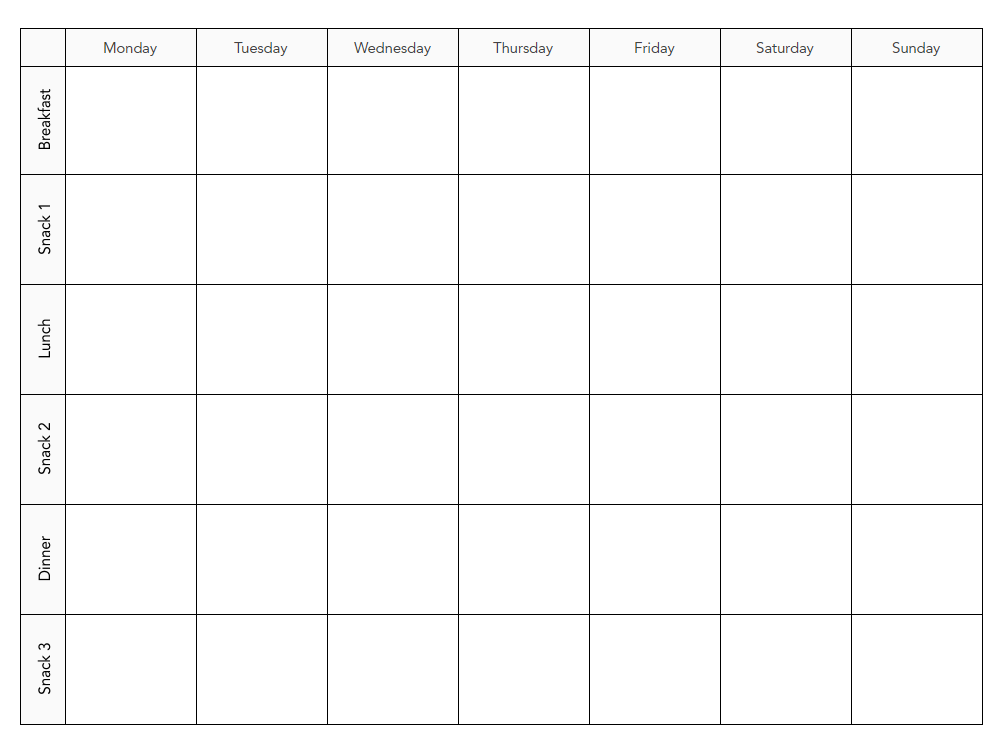In this post I will teach you how to meal prep each week to keep you on track with your health and lifestyle goals.
I have to say that meal planning and preparation has probably been the number one key to me staying on track with my food and health goals, especially during the work week.
I’m sure everyone can agree that when you get caught without prepared food and you’re busy, tired and stressed out, it’s super easy to reach for junk food.
And then of course it becomes easier to justify grabbing for more and it makes it even harder to get back on track. Am I right!
I’ve been meal prepping for probably close to eight years now and I feel like I’ve got my process pretty dialed in at this point!
Now I’m going to teach you the process of how to meal prep in hopes that it can help set you up for success too, week after week! This process normally starts and ends for me on Sunday in order to be prepared for Monday, but depending on your schedule, you could do this any day really.
In this guide on how to meal prep, I’m only going to focus on preparing breakfasts, lunches (and snacks if needed) for the week as I generally like to spend a bit more time cooking nice meals for suppers each night. Lucky me, I have no kids! However, if your life is crazy busy in the evenings then you can definitely expand this to include suppers as well.
Here she goes.
How to meal prep
1. Find recipes
Start by opening up good ol Google or one of my healthy cookbooks and find recipes that you’d like to prep for the upcoming week.
If you have no problem eating leftovers for multiple days in a row, and you’d like to spend less time in the kitchen, go for 2-3 recipes. If you don’t mind spending extra time in the kitchen and like a bit more variety throughout the week, choose up to 4 or more.
Generally when I’m searching on Google, I’ll use search terms such as:
- Paleo recipes
- Gluten-free dairy free recipes
- Keto recipes
- Healthy slow cooker recipes
- Gut healing recipes
Or if you want to get more specific and you know you’re looking for a soup or muffin recipe, for example, you could try search terms such as:
- Paleo chicken soup recipe
- Gluten-free slow cooker soup recipe
- Gluten-free dairy-free sugar-free muffin recipe
- Grain free carrot muffin recipe
You get it.
One thing I find helpful is creating a Google doc or word document where you save links to recipes that you want to use that week or try in the future. Once you’ve got a good list going, then you can just pick from them each week. Or alternatively, you could set up browser bookmarks to your favorite recipes. Or even print them off if that floats your boat!
2. Plan out what you’re going to eat for each meal and snacks for the next 7 days (or at least 5!)
For this step, it could be as simple as writing down one or two recipes for breakfast and snacks, and one or two recipes for lunch.
For example:
Breakfast – Recipe #1, recipe #2
Lunch – Recipe #1, recipe #2
Snacks – Recipe # 1 or if you want to keep it simple – something like banana and almond butter, or carrots and hummus.
Or if you’re type A or just want to get super organized about it (haha!), try using a blank weekly meal plan template like this –

3. Make a grocery list
Now that you’ve planned out your meals and found all the recipes needed, go through each recipe and determine which ingredients you already have at home and which you need to buy.
Create your grocery list.
4. Grocery shop
Now you’re ready to hit the grocery store. Generally you can find everything you need in the outer aisles at the grocery store (a.k.a. produce, meat and dairy section) and then likely you’ll have to duck into the frozen food aisle as well as the organic/natural foods aisle for things like frozen vegetables, frozen meats and seafood, nuts and seeds, flour alternatives, whole grains, dairy free milk alternatives, etc.)
Occasionally you may need to make an extra stop to a natural food store if you can’t find all the ingredients you need at your local grocery store. These days I find though that most grocery stores have all the alternative health products that you’ll need.
5. Get preppin!
Now that you’ve got your grocery haul, you are ready to start cooking. Depending on whether you are good at multitasking, you can usually work on two recipes at a time. This generally speeds things up but of course you have to pay attention to cooking times and what’s going on in each pot or pan. If you’re not too worried about how long you spend in the kitchen, try starting with one recipe at a time.
6. Store your food in glass containers and freeze
Once you’ve got your food prepared, divvy it out into individual portions. Try to determine a portion size that will fill you up and satiate you, without over or under eating. This will get easier over time as you experiment and find out what portion sizes work for you.
I highly recommend buying glass containers to store and freeze your food in as opposed to plastic containers. I will share more information about this soon, but take my word for it. Especially you ladies with hormonal imbalance or trouble with detoxification!
Put your prepared meals into the freezer for storage. If you find that you don’t have enough room, sometimes it can be helpful to buy a small deep-freeze. We do so much food preparation, we have two deep freezers in the kitchen!
7. Take food out as needed during the week
Each night (starting on Sunday), I will pull out my daily meals from the freezer and put them in the fridge to thaw.
This way, I know I’ve got exactly what I need for each breakfast, lunch and snack that day.
Do you feel confident with how to meal prep? Let me know in the comments.
Want some help to get started?
Download my free 7 day paleo meal plan or grab one of my recipe books or premade 1 month meal plans. By doing this, you can skip the first three steps above, save yourself some time and feel confident that the recipes and grocery list are on point. Win win win!
It comes ready to go with the seven day meal plan, including breakfast, lunch, supper and snacks as well as a pre-made grocery list and all of the detailed recipes and nutrition information.


 Welcome to my blog! I share my *healthified* comfort food recipes that work with a variety of different diet approaches. AND all of my recipes are 100% gluten and dairy free.
Welcome to my blog! I share my *healthified* comfort food recipes that work with a variety of different diet approaches. AND all of my recipes are 100% gluten and dairy free.
Recent Comments